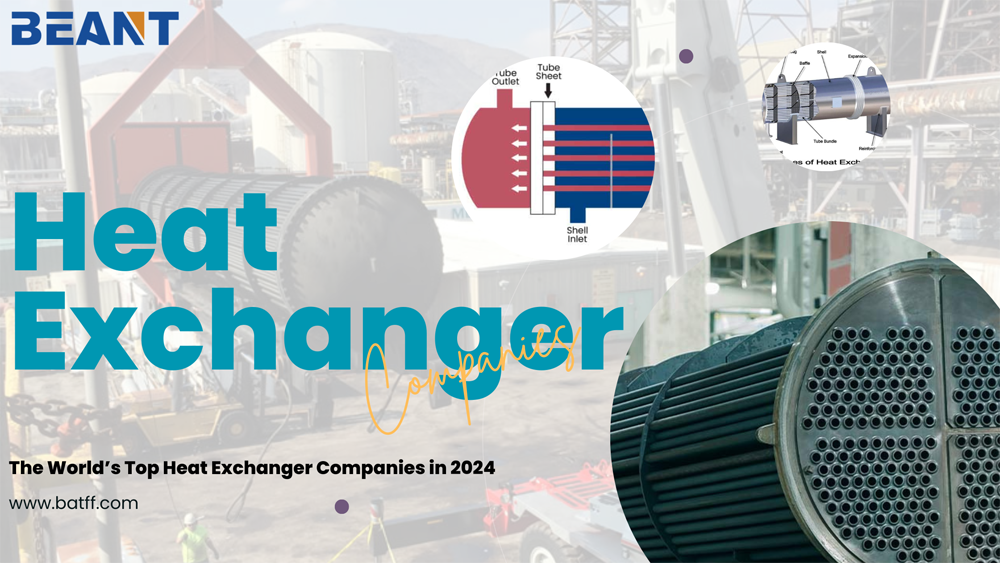
The heat exchanger industry is a vital component of the global manufacturing sector, enabling crucial processes in industries ranging from chemical processing to power generation. As the demand for more efficient and environmentally friendly solutions increases, the role of heat exchangers continues to evolve. This has paved the way for innovation and growth within the industry, spotlighting companies that are not just meeting but exceeding market expectations.
In this article, we will explore the top heat exchanger companies in the world as of 2024, examining what sets them apart from the competition. These companies are distinguished by their technological innovations, extensive market influence, robust environmental policies, and exceptional customer service. We will delve into how their contributions are shaping the future of the industry and what new trends are emerging as a result of their leadership and innovation.
Table: Top 10 Heat Exchanger Companies Worldwide (2024)
| Rank | Company Name | Headquarters | Specialty/Focus |
| 1 | Alfa Laval | Lund, Sweden | Specializes in heat transfer, separation, and fluid handling. |
| 2 | Kelvion | Bochum, Germany | Offers a wide range of heat exchangers for various industrial and commercial applications. |
| 3 | Danfoss | Nordborg, Denmark | Provides energy-efficient solutions for heat exchange processes. |
| 4 | SPX Flow | Charlotte, USA | Focuses on sustainable solutions in fluid dynamics and heat transfer. |
| 5 | Xylem | Rye Brook, USA | Specializes in technology for water and wastewater applications including heat exchangers. |
| 6 | API Heat Transfer | Buffalo, USA | Produces custom and standard heat exchanger solutions. |
| 7 | Hisaka Works | Osaka, Japan | Designs and manufactures plate heat exchangers. |
| 8 | Tranter | Wichita Falls, USA | Provides heat exchangers for challenging environments and applications. |
| 9 | Beant | China | Focuses on plate heat exchangers for various sectors. |
| 10 | GEA Heat Exchangers | Düsseldorf, Germany | Offers a broad spectrum of heat exchanger systems and solutions. |
The heat exchanger industry stands at the forefront of technological innovation, constantly evolving to meet the stringent demands of energy efficiency and operational performance. In 2024, the world’s leading heat exchanger companies are not just participants but pioneers in this technological race, introducing groundbreaking solutions that redefine industry standards.
Next-Generation Materials: One of the most significant advancements is the development and use of new materials that offer enhanced thermal conductivity and corrosion resistance. Companies like Alfa Laval and Heatric have invested heavily in research and development to produce heat exchangers made from graphene and advanced alloys. These materials not only improve efficiency but also extend the life span of the equipment, reducing maintenance costs and downtime.
Enhanced Design Techniques: Computational fluid dynamics (CFD) and 3D printing have also played pivotal roles in enhancing the design of heat exchangers. These technologies allow for more precise and flexible designs, optimizing the flow paths for fluids to maximize heat transfer while minimizing pressure drops and material use.
Energy Recovery Systems: In response to the global call for sustainability, top companies are integrating energy recovery solutions with traditional heat exchangers. This not only helps in reducing the carbon footprint but also significantly cuts energy costs for users.
Customization and Scalability: As industries vary widely in their needs, leading heat exchanger manufacturers have shifted towards customizable solutions that can be scaled to any size and capacity. Whether it’s small-scale operations or large industrial plants, the flexibility provided by these innovations ensures that all clients receive the most efficient heat exchange solutions tailored to their specific requirements.
The continuous investment in technological advancements by these top companies not only drives their growth but also pushes the entire industry towards a more innovative and efficient future.
As environmental concerns become increasingly central to industrial operations, the world's top heat exchanger companies are leading by example in integrating sustainability into their business models. These companies are not only focused on improving their products but are also dedicated to reducing their environmental footprint and enhancing the sustainability of the industries they serve.
Eco-friendly Materials and Processes: Leading companies are pioneering the use of eco-friendly materials in the manufacturing of heat exchangers. By employing materials that are more recyclable and less harmful to the environment, they reduce the ecological impact of their products throughout their lifecycle. Additionally, these companies are optimizing their manufacturing processes to decrease waste and energy consumption, further enhancing their sustainability.
Carbon Footprint Reduction: These top firms are actively engaged in efforts to reduce carbon emissions from their operations and supply chains. They implement energy-efficient technologies and renewable energy sources in their facilities. For instance, some companies have transitioned to solar-powered plants, significantly cutting down their reliance on fossil fuels.
Sustainable Product Solutions: The products themselves are designed to enhance energy efficiency for the end-users. By improving heat transfer efficiency, these heat exchangers help reduce energy consumption in processes such as heating, cooling, and refrigeration. This contributes to lower energy bills and decreased environmental impact for their clients.
Environmental Certifications and Compliance: To solidify their commitment to sustainability, these companies often pursue rigorous environmental certifications. These certifications, such as ISO 14001 for environmental management systems, not only hold the companies to high standards but also reassure customers and stakeholders of their commitment to environmental stewardship.
Through these initiatives, the top heat exchanger companies are not just responding to market demands for more sustainable products; they are actively driving the industry towards a more sustainable future, demonstrating that environmental responsibility can go hand-in-hand with business success.
In a competitive marketplace, the world's top heat exchanger companies distinguish themselves not only through their innovative products but also through their exceptional customer service and relationship management. These companies understand that long-lasting customer relationships are built on trust, responsiveness, and a deep understanding of customer needs.
Customer-Centric Approaches: Leading companies adopt a customer-centric approach to their service delivery, ensuring that they meet the specific needs of each client. This involves providing customized solutions and being responsive to customer feedback and inquiries. By prioritizing customer satisfaction, they foster loyalty and build a solid customer base.
After-Sales Support: Exceptional after-sales support is a hallmark of these top companies. They offer comprehensive maintenance, repair, and troubleshooting services, which are essential for the high-stakes environments in which their products operate. This support is crucial for minimizing downtime and ensuring that their systems operate at peak efficiency.
Through these strategies, the top heat exchanger companies are not just vendors but valuable partners to their clients. Their commitment to service excellence plays a critical role in their global success and in the advancement of the entire industry.
As we look toward the future, the heat exchanger industry continues to be a hub of innovation and growth. The leading companies are not just responding to current trends but are also shaping the future of this critical sector. Here’s what to expect from the top heat exchanger companies in the coming years.
Continued Technological Innovation: Innovation remains at the core of the heat exchanger industry’s progress. Future developments are expected to focus on increasing efficiency and reducing environmental impact. This includes advancements in heat transfer technologies, more robust integration of AI and IoT for smart monitoring systems, and further improvements in materials science.
Customization and Flexibility: With the increasing complexity of industrial processes, there will be a greater need for customized solutions. Top companies will likely offer more bespoke designs and flexible options to accommodate specific industrial requirements, enhancing efficiency and performance.
As we've explored throughout this article, the top heat exchanger companies of 2024 are not merely adapting to changes in the global industry landscape; they are actively shaping it. These companies continue to push the boundaries of technology, sustainability, and customer engagement, setting new standards for innovation and efficiency. From pioneering advancements in material science to their commitment to environmental stewardship and customer satisfaction, these leaders are integral to the ongoing evolution of a wide range of industries.
Feel free to leave your message on our board. If you're looking to inquire about prices or place an order, this is the right place! Let us know the details of your needs, and our team will get back to you with a personalized quote as quickly as possible. We're here to ensure your experience is seamless and satisfactory. Share your requirements or ask any questions you might have - we're eager to assist and look forward to doing business with you!
Name:Tim
Phone:+86-15716151880
Email:[email protected]
Company:BEANT
Address:No. 28, Luoshen Road, Luoshe Town, Huishan District, Wuxi City, Jiangsu Province
